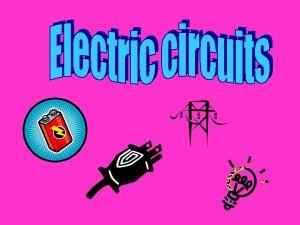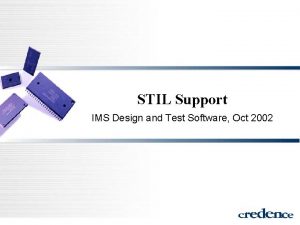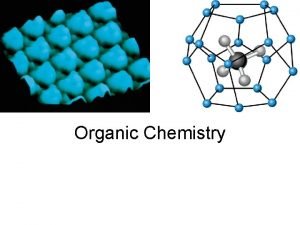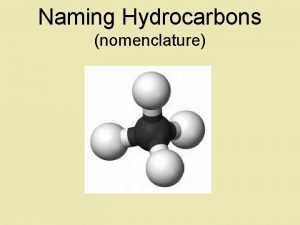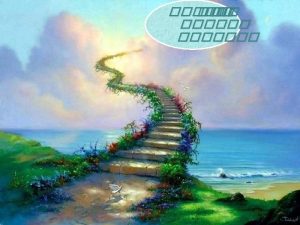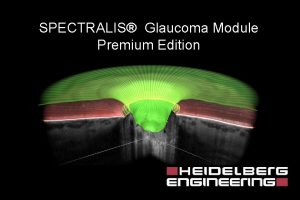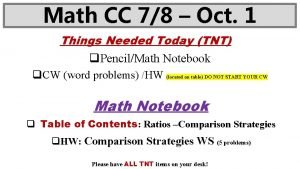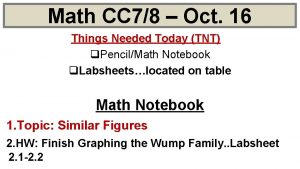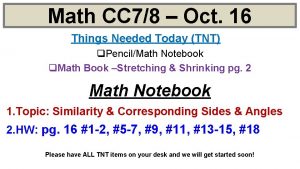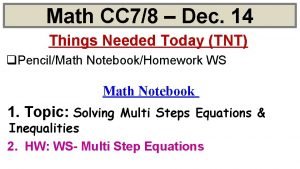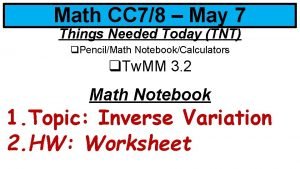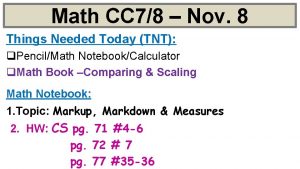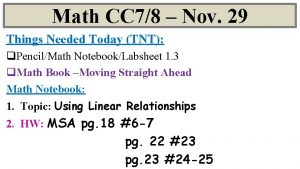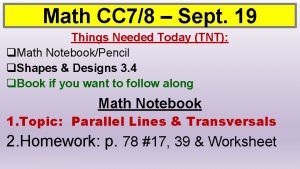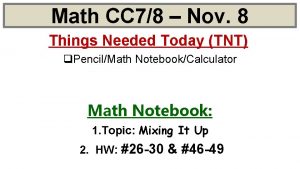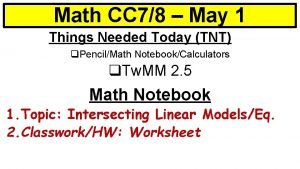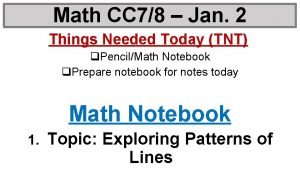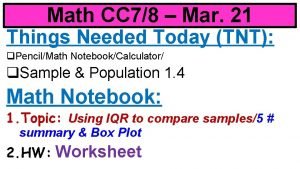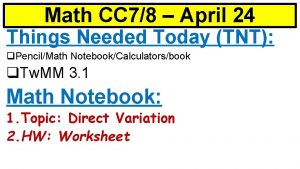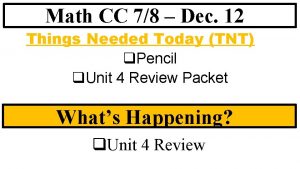Math CC 78 Oct 25 Things Needed Today















- Slides: 15

Math CC 7/8 – Oct. 25 Things Needed Today (TNT) q. Pencil/Math Notebook q. Write your topic in the table of content in your notebook Math Notebook Table of Content: Similar-Congruent-Scale Factor Please have ALL TNT items on your desk and we will get started soon!

What’s Happening? q. Stein Family Activity-? ? q. Vocabulary q. Home Practice

Prediction In the Stein Family activity, you were able to graph Frakenstein, Lankenstein, Tankenstein and Prakenstein character. Based on what you notice, you and your partner will predict the following questions. Justify your reason for choosing Agree or Disagree. 1) If 2 figures are similar, then they are congruent Disagree 2) If the ratios of the length of corresponding sides of 2 triangles are equal, then the triangles are congruent. Disagree Agree 3) If triangles are similar, then they have the same shape. 4) If 2 triangles are congruent then each pair of corresponding angles are congruent. Agree 5) If 2 angles of one triangle are congruent to corresponding angles of another triangle, then the triangle are similar.

Mathematical Highlights/Understanding Similarity When you encounter a new problem, it is a GREAT idea to ask yourself the following questions in this unit Ø WHAT determines whether two shapes are similar? Ø WHAT is the same and what is different about two similar figures? Ø HOW are side lengths, areas, & scale factors related. Ø HOW can I use similar figures to find missing measurements?

Key Vocabulary q Similar q q q Congruent Image Scale Drawing Corresponding sides Corresponding Angles

Similar & Congruent Figures Similar v Same shape v BUT not the same size v MUST have the same ratio of side lengths v their angle measures are the same. v side lengths, perimeters, and areas are different. 10 6 8 5 3 4 Congruent • SAME shape • SAME size

What do these symbols represent? q. The symbol means that the shapes are similar q. The symbol means that the shapes are congruent

Key Vocabulary Image - The figure that results from some transformation of a figure. In other word when you make a scale drawing of the original IMAGE Pre-Image/Original Amphibia

Key Vocabulary A drawing that shows a real object with accurate sizes reduced or enlarged by a certain amount (called the scale). Scale Drawing– exampl es

Key Vocabulary The lengths of the corresponding line (sides) segments are different. Corresponding sides The image lengths are twice as long as the corresponding lengths in the original. g din g in nd o sp s e r d o i s C on p es es r r Co sid Corresponding side s original Corresponding side s image

Key Vocabulary The angles in the images are the same Corresponding angles as the corresponding angles in the original. No matter how you enlarge or reduce an object, the angle stays the same. Examples Corresp onding angles original image

Scale Factor qa ratio used to enlarge or reduce similar figures. qthe ratio of change between two sides. q. Can not be a negative # q. The number you multiply by to relate the first shape to the second is the scale factor.

Scale Factor s Add ote to n The scale factor is the number that the side lengths of one figure can be multiplied by to give the corresponding side lengths of the other figure. The rectangles below are mathematically similar. The scale factor from the smaller rectangle (A) to the larger rectangle (B) is 3. • 3 2 cm 6 cm B A 3 cm • 3 9 cm What is the scale factor from the larger Rectangle (B) to the smaller Rectangle (A)? Explain how you found it.

Scale Factor q Scale factor refers to the ratio of a length on one object to the corresponding length on a different object. q ***IMPORTANT* ** REMEMBER that you MUST use the same unit of measurement for both parts of the ratio. q Scale Factor is a multiplier used to EITHER enlarge(stretch) or reduce(shrink) the size of a figure. q S. F greater than 1 enlarges

5 ge t? u id yo How many times bigger is 2 is your scale factor the orange because 5 ·shape? 2 = 10 and 4 · 2 = 8 ha W 4 td 10 8
 Things needed to make a circuit
Things needed to make a circuit Today's lesson or today lesson
Today's lesson or today lesson Meeting objective
Meeting objective Characteristic of fingerprint
Characteristic of fingerprint For todays meeting
For todays meeting Today's lesson or today lesson
Today's lesson or today lesson Today's class will be at
Today's class will be at Jhlt. 2019 oct; 38(10): 1015-1066
Jhlt. 2019 oct; 38(10): 1015-1066 Stil oct
Stil oct How are organic compounds classified
How are organic compounds classified October 3rd 1993
October 3rd 1993 Meth eth prop but mnemonic
Meth eth prop but mnemonic Meth eth prop bute
Meth eth prop bute Visante oct
Visante oct Oct spectralis
Oct spectralis Jhlt. 2019 oct; 38(10): 1015-1066
Jhlt. 2019 oct; 38(10): 1015-1066
